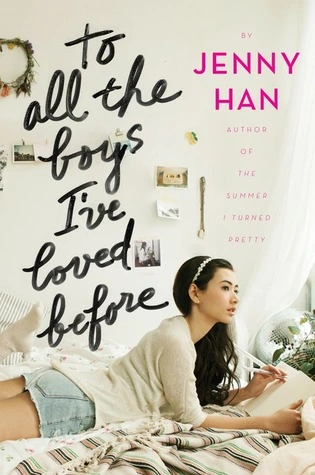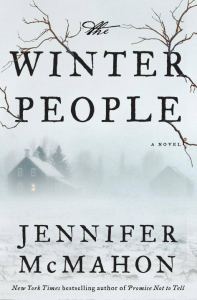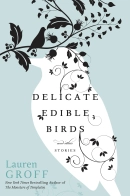 As I was wading knee-deep through The Changeling, my primary thought was, “How is this book not a bigger deal? How was it not talked about more when it came out??” I was in the thick of it, and I couldn’t help marvelling at how simply good it was. A little research showed me that the book did get a fair bit of acclaim, but not nearly as much as I would have expected for a book this . . . showstopping. It’s not often that I’m flabbergasted by a novel, but this was one of those times when I was just blown away.
As I was wading knee-deep through The Changeling, my primary thought was, “How is this book not a bigger deal? How was it not talked about more when it came out??” I was in the thick of it, and I couldn’t help marvelling at how simply good it was. A little research showed me that the book did get a fair bit of acclaim, but not nearly as much as I would have expected for a book this . . . showstopping. It’s not often that I’m flabbergasted by a novel, but this was one of those times when I was just blown away.
The Changeling tells the story of Apollo Kagwa. He is raised by his single mom because his father mysteriously vanishes when Apollo is four, leaving Apollo with nothing but a recurring nightmare and, later, a box of ephemera – including the book Outside Over There. As an adult, Apollo, a rare bookseller by trade, is deeply in love with his wife Emma, and they are expecting a baby. But he is still grappling with the effects of his past, the nightmare resurfacing as he eases into the idea of fatherhood. When the baby arrives, all seems to be well, though neither he nor Emma, now a part-time librarian, is particularly flush with cash. When Apollo starts taking the baby, Brian, with him to work, Emma starts receiving increasingly disturbing third-person, candid pictures of Apollo and Brian from Apollo’s phone. The photos disappear shortly after they arrive, and the last one comes with a terrifying message. In a short period of time, Emma begins to experience what appears to be some severe symptoms of postpartum depression, as well as exhibiting some alarming behaviors that set Apollo on edge. It all culminates in one gut-wrenching scene, when Emma finally reaches *ahem* her boiling point (I’m so sorry) and disappears. An angry and bewildered Apollo then sets out on a quest to find Emma, and to salvage what is left of the life he has known so far.
There is so much going on in this book that it is nearly impossible to categorize. Horror, fantasy, fiction, allegory, fairy tale, folklore, mystery…. I finally settled on “horror”, but that still doesn’t exactly feel right. The Changeling is unsettling, and horrific things happen, but it doesn’t fit neatly into any one category. It is a truly unclassifiable work of fiction. That’s what seems to make it such a wonderful mystery – it’s impossible to speculate about what comes next, or to guess who is culpable for the events that unfold, because the reader’s perception is Apollo’s perception, and he doesn’t know what the hell is going on either.
Many of the story’s elements are meant to confuse, and I loved that about it – the more fantastic mysteries tend to have very rational explanations, and the traditional mysteries have wild, often folkloric explanations. Moreover, we are seeing and experiencing it all through Apollo’s eyes, at first disbelieving, then incredulous, then finally resigned. When I thought I had something figured out, I realized that there was much more to the story than I had ever anticipated.
There is also a lot of subtle social commentary here surrounding race, class, and our dependence on technology. Apollo is half black, and his best friend an confidante Patrice is black. The two men constantly have to think about their actions, how they are perceived by the world, whether or not they are going to be stopped by the police, and what that might mean for them. These worries are just part of their lives, and it’s such a subtle thing, but so realistic. A lot of the story also focuses on the reach of technology, and who we are consciously and unconsciously letting into our lives. This facet of the story felt like very real modern-day horror to me.
One of my personal favorite aspects of The Changeling is that Victor Lavalle’s love of books is evident in every page. Outside Over There, one of the creepier Maurice Sendak books, is the most important book in this story, for various reasons. There are also several literary references hidden throughout the story like tiny clues. I love a good treasure hunt, and was delighted every time I came across one. The references are relevant to the particular events of the story when they appear, which feels like an added bonus if you catch the reference. (My two favorite finds were a nod to Shirley Jackson’s We Have Always Lived in the Castle and a quick but deft allusion to Wuthering Heights.) I’d like to reread The Changeling at some point, if only in an attempt to identify more of those references. I know I missed a ton of them simply because I didn’t expect them, or even really register one until I was smacked over the head by it.
I would be doing the book a disservice by trying to explain everything, so I am being purposefully vague about the intricacies of it. The Changeling is something best experienced personally, and if you step into this story with an open mind, you will not be disappointed. Please, do yourself a favor and go read it.
Recommended For:
Anyone who likes horror, folklore, and smart novels. Also, there is a little bit of gore, so also recommended for those who are not excessively squeamish (I am a wuss, but the quality of the writing and story line definitely outweighed the cringe factor for me).
Book Specifics:
Author: Victor Lavalle
Publish Date: 2018
Publisher: Spiegel & Grau
Genre: Horror? (See above)
Format: Paperback
Pages: 431
ISBN / ISBN13: 9780812985870
US Price: $18.00










